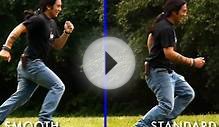
Documentary mode is a conceptual scheme developed by American documentary theorist Bill Nichols that seeks to distinguish particular traits and conventions of various documentary film styles. Nichols identifies six different documentary 'modes' in his schema: poetic, expository, observational, participatory, reflexive, and performative. While Nichols' discussion of modes does progress chronologically with the order of their appearance in practice, documentary film often returns to themes and devices from previous modes. Therefore, it is inaccurate to think of modes as historical punctuation marks in an evolution towards an ultimate accepted documentary style. Also, modes are not mutually exclusive. There is often significant overlapping between modalities within individual documentary features. As Nichols points out, "the characteristics of a given mode function as a dominant in a given film…but they do not dictate or determine every aspect of its organization." (Nichols 2001)
Poetic mode[edit]
Early documentary filmmakers, bolstered by Soviet montage theory and the French Impressionist cinema principle of photogenie, appropriated these techniques into documentary filmmaking to create what Nichols would later call the poetic mode. Documentary pioneer Dziga Vertov came remarkably close to describing the mode in his "We: Variant of a Manifesto" when he proclaimed that "kinochestvo" (the quality of being cinematic) is "the art of organizing the necessary movements of objects in space as a rhythmical artistic whole, in harmony with the properties of the material and internal rhythm of each object." (Michelson, O’Brien, & Vertov 1984)
The poetic mode of documentary film tends toward subjective interpretations of its subject(s). Light on rhetoric, documentaries in the poetic mode forsake traditional narrative content: individual characters and events remain undeveloped, in favor of creating a particular mood or tone. This is particularly noticeable in the editing of poetic documentaries, where continuity is of virtually no consequence at all. Rather, poetic editing explores "associations and patterns that involve temporal rhythms and spatial juxtapositions." (Nichols 2001) Joris Ivens’ Regen (1929) is paradigmatic of the poetic mode, consisting of unrelated shots linked together to illustrate a rain shower in Amsterdam. That the poetic mode illustrates such subjective impressions with little or no rhetorical content, it is often perceived as avant-garde, and subsequent pieces in this mode (Godfrey Reggio’s (1982) for example, ) are likely to be found within that realm.
RELATED VIDEO




 The transmission of light through holes smaller than the wavelength of incident light is significantly increased in a new region of operation that has been identified and analyzed. The analysis shows that light can be transmitted through a high-density packing of...
The transmission of light through holes smaller than the wavelength of incident light is significantly increased in a new region of operation that has been identified and analyzed. The analysis shows that light can be transmitted through a high-density packing of...







